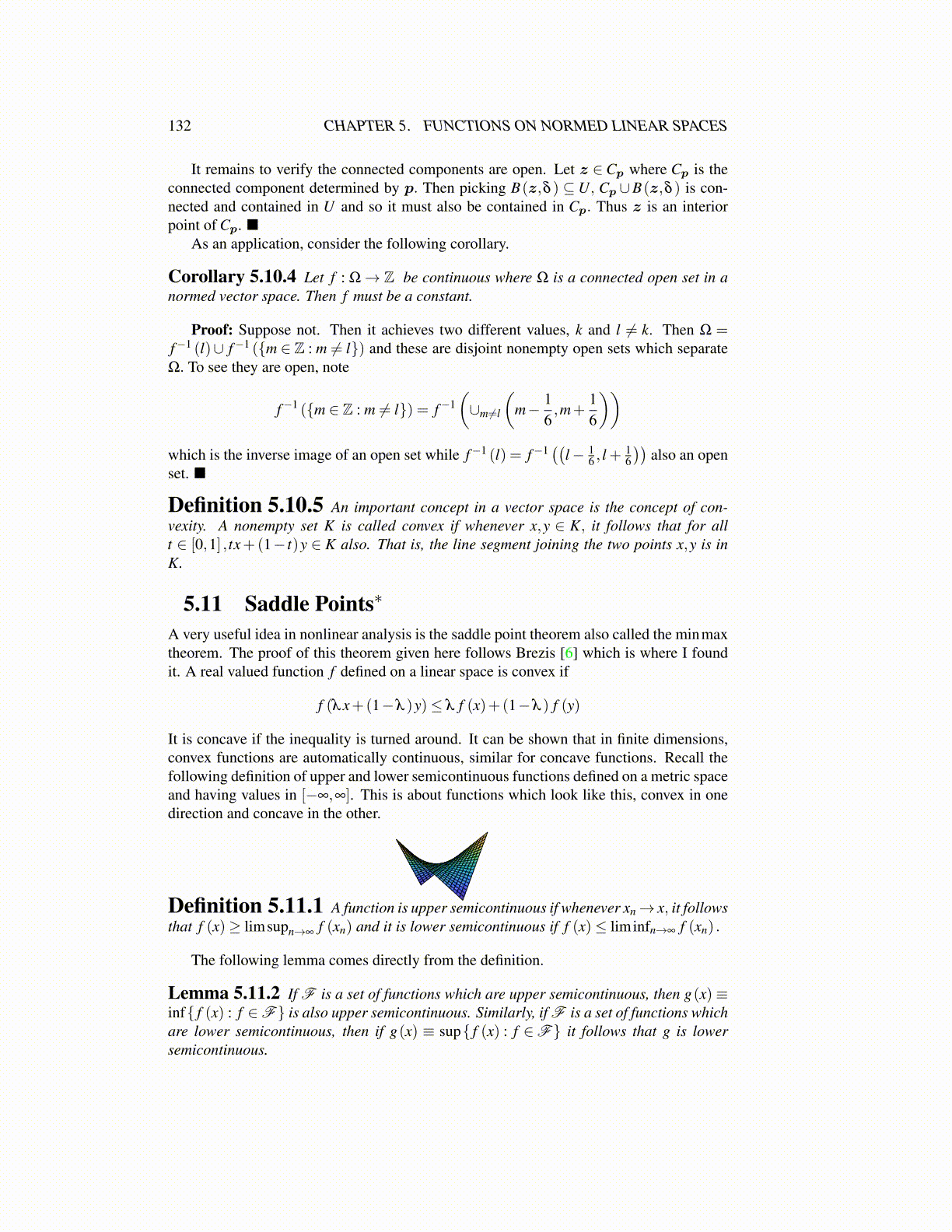
132 CHAPTER 5. FUNCTIONS ON NORMED LINEAR SPACES
It remains to verify the connected components are open. Let z ∈ Cp where Cp is theconnected component determined by p. Then picking B(z,δ ) ⊆U, Cp ∪B(z,δ ) is con-nected and contained in U and so it must also be contained in Cp. Thus z is an interiorpoint of Cp. ■
As an application, consider the following corollary.
Corollary 5.10.4 Let f : Ω→ Z be continuous where Ω is a connected open set in anormed vector space. Then f must be a constant.
Proof: Suppose not. Then it achieves two different values, k and l ̸= k. Then Ω =f−1 (l)∪ f−1 ({m ∈ Z : m ̸= l}) and these are disjoint nonempty open sets which separateΩ. To see they are open, note
f−1 ({m ∈ Z : m ̸= l}) = f−1(∪m ̸=l
(m− 1
6,m+
16
))which is the inverse image of an open set while f−1 (l) = f−1
((l− 1
6 , l +16
))also an open
set. ■
Definition 5.10.5 An important concept in a vector space is the concept of con-vexity. A nonempty set K is called convex if whenever x,y ∈ K, it follows that for allt ∈ [0,1] , tx+(1− t)y ∈ K also. That is, the line segment joining the two points x,y is inK.
5.11 Saddle Points∗
A very useful idea in nonlinear analysis is the saddle point theorem also called the minmaxtheorem. The proof of this theorem given here follows Brezis [6] which is where I foundit. A real valued function f defined on a linear space is convex if
f (λx+(1−λ )y)≤ λ f (x)+(1−λ ) f (y)
It is concave if the inequality is turned around. It can be shown that in finite dimensions,convex functions are automatically continuous, similar for concave functions. Recall thefollowing definition of upper and lower semicontinuous functions defined on a metric spaceand having values in [−∞,∞]. This is about functions which look like this, convex in onedirection and concave in the other.
Definition 5.11.1 A function is upper semicontinuous if whenever xn→ x, it followsthat f (x)≥ limsupn→∞ f (xn) and it is lower semicontinuous if f (x)≤ liminfn→∞ f (xn) .
The following lemma comes directly from the definition.
Lemma 5.11.2 If F is a set of functions which are upper semicontinuous, then g(x)≡inf{ f (x) : f ∈F} is also upper semicontinuous. Similarly, if F is a set of functions whichare lower semicontinuous, then if g(x) ≡ sup{ f (x) : f ∈F} it follows that g is lowersemicontinuous.